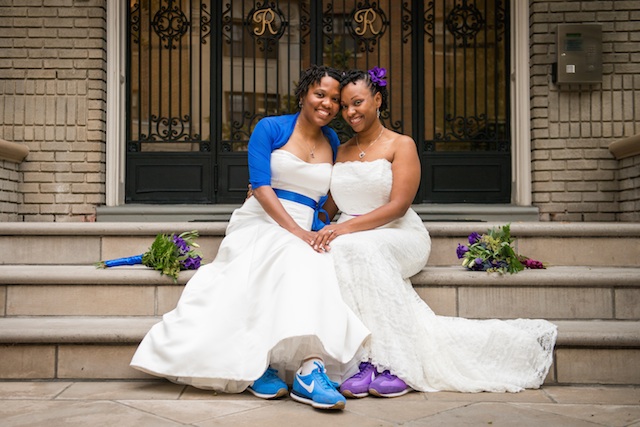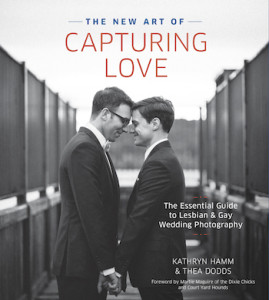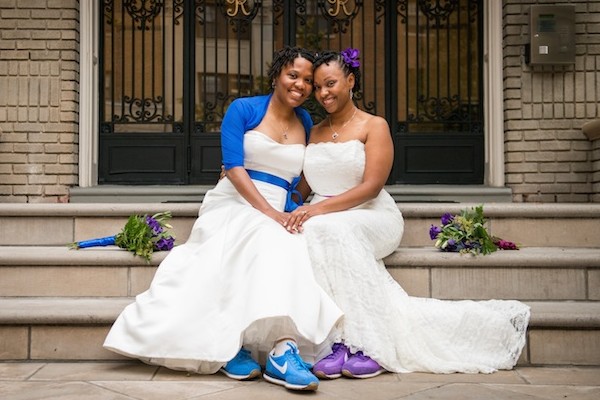
As marriage equality spreads, the idea of LGBTQ weddings is becoming more of a reality in this traditional industry. However, while the majority of vendors would like to work with our community, many are not sure where to begin.
That’s where The New Art of Capturing Love comes in. This book, created by award-winning photographer Thea Dodds and President of Gayweddings.com Kathryn Hamm, not only includes a number of breathtaking photographs of same-sex weddings, it also reads as kind of a how-to for the wedding industry for understanding our needs.
Many may wonder just how many differences there could really be. However, whether it is matching similar color schemes, posing a couple without using gender roles, or working with a couple who has been together for 20+ years, Dodds and Hamm assure us that the differences are vast. The book also challenges the idea of a bride-focused wedding and shows photographers how to embrace the couple as a whole.
“The reality is that we’ve got to break some old habits, just like couples are breaking old traditions. We now have to figure out how to approach LGBTQ people where they are, and not impose our cultural expectations upon them,” says Dodds. “The photographer has a lot of power in playing a role in what message is told. So the photographer needs to come from an educated place to make sure that they’re telling the story the couple wants told.”
 The book also covers inclusivity in general. Much of this has to do with changing the language; making sure paperwork does not say “bride and groom” or saying “attendants” instead of “bridesmaids” or “groomsmen”. It also touches on giving a couple the options to have their pictures on a public site because they might not be fully out. Mostly though, the book is about taking an industry that is very fixed and traditional and evolving it to the more modern couple, LGBTQ or straight, to give them a wedding that is a true representation of their love.
The book also covers inclusivity in general. Much of this has to do with changing the language; making sure paperwork does not say “bride and groom” or saying “attendants” instead of “bridesmaids” or “groomsmen”. It also touches on giving a couple the options to have their pictures on a public site because they might not be fully out. Mostly though, the book is about taking an industry that is very fixed and traditional and evolving it to the more modern couple, LGBTQ or straight, to give them a wedding that is a true representation of their love.
“I’m here working with engaged couples to help those who want to get hitched, legally or otherwise, to do what they want, how they want, and where they want to do it,” says Hamm. “But I also work with wedding professionals and other companies in the wedding industry and encouraging them to consider a broader definition of the wedding market inclusive of same-sex couples. And not to treat us like dollar signs but instead understand who we are and what we need and by extension how to better serve us.”
Though the authors realize this book may not be as inclusive of the transgender and genderqueer community, they are hoping it will help start the conversation about working with all non-traditional couples. By depicting 72 unique and loving couples, the book is helping to show the industry and all its readers that our love is special and knows no bounds.


